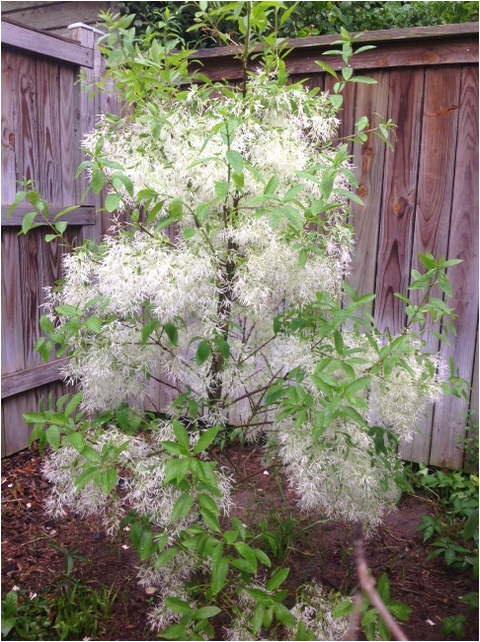I wrote the client to ask how it was doing. He sent along the picture below. The young tree is barely six feet tall but look at the blooms!
This past spring I was at the nursery with another customer to buy some perennials. They just happened to have a blooming fringe tree in stock. My customer friend took a big deep smell and exclaimed that it smelled like chocolate. I had never really stuck my nose into the flower tufts so I did the same. To my surprise it did indeed smell like chocolate. We took it home and found a perfect place for it.
Fringe trees become beautiful, somewhat gnarly trunked small trees 15-20 feet high, often as wide as tall. Their bark is a beautiful furrowed gray-brown, and the leaves turn a delightful yellow in the fall.
Our fringe tree is a true native, being found across the Carolinas in various habitats and soil types and sun conditions. I have seen fringe trees in the wild on several occasions, usually as an under story tree or on the edges of wooded areas.
What I find most interesting about fringe trees is that most people have never seen them, yet when they do they find the tree fascinating, even exotic.
And this is what I find most interesting about gardening with native plants. So inundated have we been for so long (almost 300 years!) by so many mostly oriental plants, plants which are now the mainstays of the southern garden, that it is the native species that have become the rare, interesting, and exotic ones - the ones we are inclined to treat as lost treasures!


